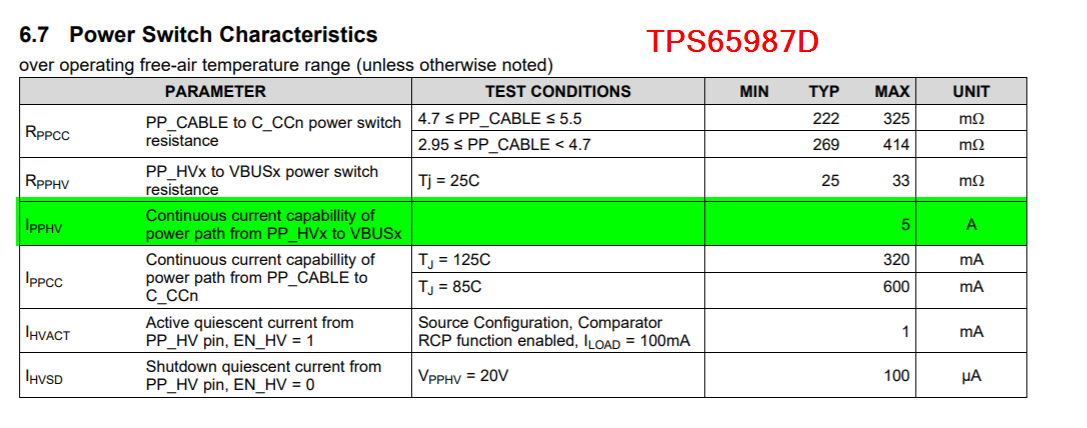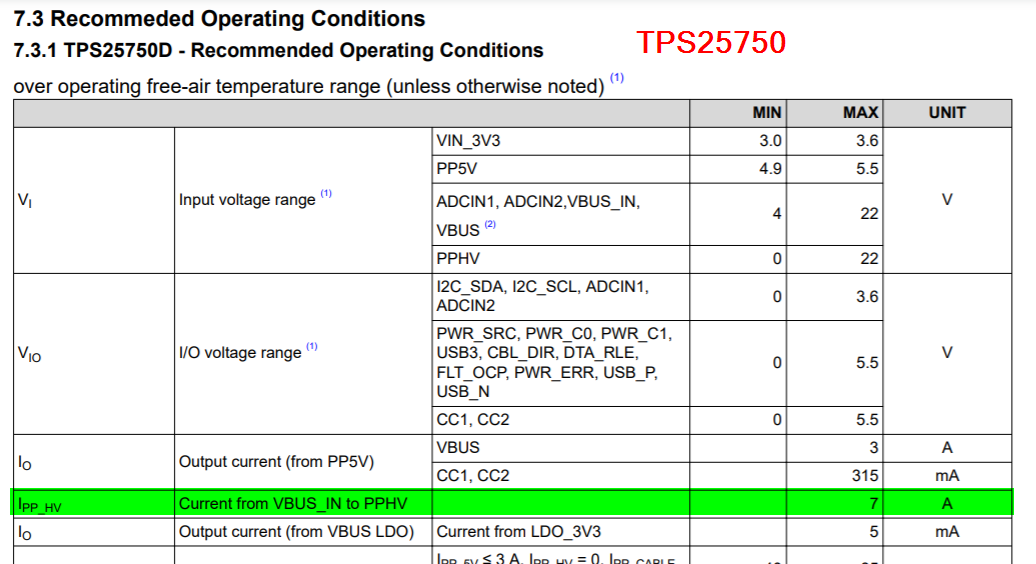Other Parts Discussed in Thread: TPS65987D
Hello,
- 1 -
According to datasheet of TPS25750, Absolute max for sink current is defined as "7A" (7.1.2 TPS25750D - Absolute Maximum Ratings).
On the other hand, "7A" is also defined in section 7.3.1 TPS25750D - Recommended Operating Conditions of "IPP_HV" parameter.
I wonder it is ok that recommended current is same as absolute current.
Could you confirm ?
- 2 -
As I described above, "7A" is also defined in section 7.3.1 TPS25750D - Recommended Operating Conditions of "IPP_HV" parameter.
I'm not sure which usecase "7A" is used. (USB PD is defined up to 5A on current specification(Rev PD3.0).)
Which usecase do you assume ?
BR,




